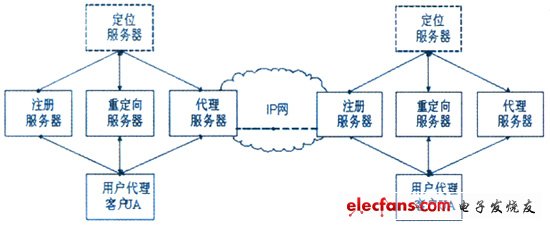The session initiation protocol (sessioniniTIaTIonprotocol) is a signaling control protocol defined by the IETF to implement real-time communication applications based on IP networks. 3GPP defines the network architecture of the IP Multimedia Subsystem (IPMulTImedia Subsystem: IMS), and carries various multimedia services (VoIP, streaming media, online games, etc.) based on SIP.
1. Introduction to SIP
Session Initiation Protocol SIP (SessionIniTIationProtocol) is described to generate, modify and terminate the conversation between one or more participants. It is a signaling proposed by the IETF in 1999 to implement real-time communication applications based on IP networks. Control protocol. It breaks the transmission mode of traditional telecommunications services, adopts Internet-based guidelines, and integrates cellular systems with Internet applications to provide IP-based multimedia services. It has the characteristics of openness, scalability, and security. 3GPP
SIP has been used as the control protocol for the multimedia domain of the third generation mobile communication system.
It often happens that a user moves between multiple locations. For example, a company employee may be in a company, home, or cafe. In order to provide users with convenient mobility, SIP uses a uniform resource locator URI (UniformResourceIdentifier) ​​to represent users. It usually consists of a domain name plus a user name, such as SIP: John@eastcom.com, similar to an email address. The SIP URI is just a logical identifier used to uniquely identify the user. When the user registers, it will be bound to the user's IP address and recorded to the location server.
In SIP, the system adopts the client / server structure commonly used in the Internet, which is composed of two parts: user agent and server. The user agent is divided into two types: user agent client (UAC: UserAgentClient) and user agent server (UAS: UserAgent Server). UAC is used to initiate session requests, and UAS is used to accept and respond to session requests. These two are only logical functions. In fact, the network terminal should have these two functions at the same time, both to initiate a conversation, and to accept and respond to the conversation. The server is divided into a proxy server (Proxy Server), a redirected server (Redirected Server) and a registration server (Registrar).

Figure 1 SIP network architecture
Figure 1 describes the basic network architecture of SIP. After the user accesses the network, he must first register with the registration server, and the registration information is written into the location server (the location server is not a SIP network element, but only a database). When the user agent client UAC wants to initiate a call, it generally sends a call request message to the outgoing proxy server in this domain. The media description information is encapsulated in the SIP message body in the form of SDP (SessionDescriptionProtocol) and sent out. The proxy server checks the called address and forwards the request (possibly through multiple intermediate proxy servers) until it reaches the proxy server in the called domain. The proxy server of the called domain determines the exact location of the called by querying the positioning server, and then forwards the request to the called user proxy server UAS. After receiving the request, the called UAS generates a response message. The response message will be returned to the calling UAC in the same way as the request message. Based on the content of the response message, the calling UAC chooses to establish a call, re-initiate the call, or cancel the call. If the called party is not at home, the calling party will relocate the called party through the relocation server and then initiate the request.
SIP has two types of messages:
(1) Request: A message sent from the client to the server. The SIP core specification defines 6 types of SIP requests:
INVITE—Invite users to join the call.
BYE-Terminate the call between two users.
OPTIONS—Request information about server capabilities.
ACK—Confirm that the client has received the final response to INVITE.
REGISTER—Provides address resolution mapping to let the server know the location of other users.
INFO—Used for signaling in the session.
(2) Response: A message sent from the server to the client. When the server receives the request, it sends one or more responses. Each response has a status code (integer of 100-699) representing the status of the transaction. The following are the commonly used responses and their status codes:
trying (100)-trying
ringing (180)-ringing
sessionprogress (183) —session progress
OK (200)-good
Insulation Board works well as a flame barrier insulation in appliances and electronics, and provides long-term performance at temperatures exceeding 482°F (250°C).
Transformer Insulation meets the high performance insulation requirements for new high-temperature, liquid-filled distribution transformer designs. This innovative insulation offers excellent thermal stability, low moisture absorption, high thermal conductivity and long-term reliability. This low-density board insulation is available in a range of thicknesses.
The products are applied to various power distribution systems and their components such as transformers, switch cabinets, motors, etc. The company abides by the credibility of the first, quality first, continue to work hard on the development and research of insulating materials products, consolidate the market leading position, and bow to provide the best service to users.
Insulation Board
Insulation Board,Insulation Beech Sheet,Phenolic Paper Laminate,Insulation Laminated Sheet
Yingkou Dongyuan Electrical Insulation Board Co.,Ltd , https://www.dy-insulation.com